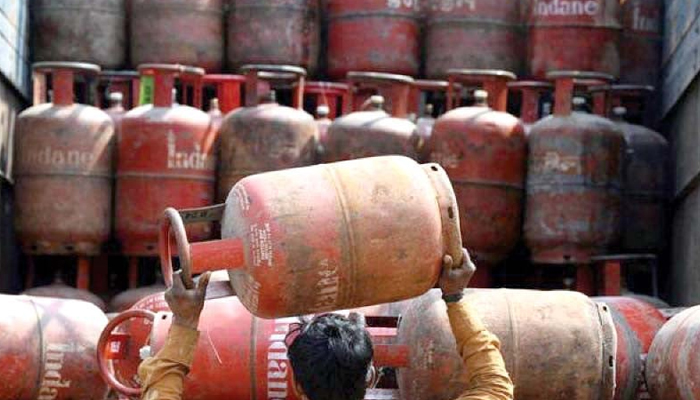Govt in a fix over gas supply to domestic users in winter
Senior official at Energy Ministry told The News that RLNG injection would increase circular debt by Rs200bn
ISLAMABAD: Amid increasing gas demand in winter season, the caretaker regime finds itself on a tightrope as to whether it should inject or divert costly RLNG into domestic sector during winters.
A senior official at Energy Ministry told The News that the RLNG injection would increase circular debt by Rs200 billion.
“Though Pakistan LNG Limited (PLL) has sought bids for two spot LNG cargoes to be delivered on 7-8 and 13-14 December, the purchase depends on bids’ price. The bids would be opened on October 4.
The PLL may also seek bids for two more spot cargoes for the month of January 2024. So far the RLNG valued at Rs248 billion has been injected in the domestic sector from 2018 up till now, but the said amount has not been recovered as there is no way to recover the cost from domestic consumers.
The residential consumers have tariffs based on local gas, not imported gas. And if the RING is supplied to the residential sector for four months, another Rs200 billion would be piled up. The International Monetary Fund (IMF) wants the government to charge full RLNG price to every kind of consumer to avert further build-up of circular debt in the gas sector. The IMF review talks are likely to be undertaken at October end.
The SNGPL says in Punjab, KPK, and northern areas, the RLNG supply is initiated to the domestic sector in every winter season by mid-October which lasts till March. “The gas sector has already become unsustainable in the wake of the circular debt that has so far swooped up to Rs2,900 billion,” the official said.
Pakistan is, the official said, currently getting RLNG supply from abroad under term agreements which include 5 cargoes from Qatar at 13.37 percent of Brent, 3 cargoes again from Qatar at 10.2 percent of Brent, and one from ENI at 12.14 percent of Brent. So 900 mmcfd of imported gas is not enough to cater to the increasing demand for gas in December. “This fact has prompted the caretaker regime to import two cargos from the open market which will jack up the imported gas to 1100 mmcfd from 900 mmcfd.”
The local gas production has reduced to 3.2bcfd and it is decreasing by 9-10 percent every year. This summer season gas was not available to the domestic sector for more than eight hours as it was made available in the morning for three hours from 6 am to 9 am, at noon, it was available for two hours from 12 noon-2 pm and in the evening it was available for three hours from 6 pm to 9 pm.
Keeping in view the dwindling local gas production, the local gas is to be available for 6 hours a day only — two hours each for the morning, afternoon, and evening cooking times. If the government decided to maintain the gas availability at 8-9 hours, then it would have no option but to divert the RLNG to the domestic sector.
The official said that the Sui Southern may have a maximum gas of 725 mmcfd in its system and Sui Northern 820 mmcfd. The power sector, however, has reduced its demand for electricity generation as power consumption in the winter season tumbles to 10,000 MW across the country. The power sector has reduced its demand to 200 mmcfd for November, 250 for December, 350 mmcfd for January 2024, and 150 mmcfd for February 2024.
-
 Brooklyn Beckham's Wedding Dance With Mom Victoria Sparks Hilarious Memes
Brooklyn Beckham's Wedding Dance With Mom Victoria Sparks Hilarious Memes -
 King Charles' Latest Photos A Statement On His Health?
King Charles' Latest Photos A Statement On His Health? -
 Tom Cruise's Biggest Dream Crushed By The President?
Tom Cruise's Biggest Dream Crushed By The President? -
 King Charles, Queen Camilla Send Message To King Of Spain After Train Crash
King Charles, Queen Camilla Send Message To King Of Spain After Train Crash -
 'We Believe Brooklyn': David Beckham Trolled After Son's Statement
'We Believe Brooklyn': David Beckham Trolled After Son's Statement -
 Microsoft CEO Says AI Must Deliver Real World Impact To Survive
Microsoft CEO Says AI Must Deliver Real World Impact To Survive -
 Stranger Knocks, Then Opens Fire On Indiana Judge And Wife
Stranger Knocks, Then Opens Fire On Indiana Judge And Wife -
 Priscilla Presley's Derogatory Remarks On Late Daughter Lisa Marie Reignite Controversy
Priscilla Presley's Derogatory Remarks On Late Daughter Lisa Marie Reignite Controversy -
 Japan Unveils Anti-ship Missile With ‘barrel-roll’ Evasion To Outsmart Defenses
Japan Unveils Anti-ship Missile With ‘barrel-roll’ Evasion To Outsmart Defenses -
 How Brooklyn Beckham 'mentor' Prince Harry Inspiring Him To Speak Against Family?
How Brooklyn Beckham 'mentor' Prince Harry Inspiring Him To Speak Against Family? -
 Zac Efron, Kenny Ortega Revisit 'High School Musical' After 2 Decades
Zac Efron, Kenny Ortega Revisit 'High School Musical' After 2 Decades -
 Threads Overtakes X On Mobile Users: Here’s Why Everyone’s Switching
Threads Overtakes X On Mobile Users: Here’s Why Everyone’s Switching -
 Kanye West Eyes Performing First-ever Concert In India
Kanye West Eyes Performing First-ever Concert In India -
 Brooklyn Beckham's Claim About Nicola's Wedding Ordeal Gets Challenged
Brooklyn Beckham's Claim About Nicola's Wedding Ordeal Gets Challenged -
 AI Horror: 4 In 5 Young Workers Fear 'AI Could Replace Their Jobs', Says Report
AI Horror: 4 In 5 Young Workers Fear 'AI Could Replace Their Jobs', Says Report -
 Missouri Couple ‘locked Sons In Chicken Pen, Shot Them’ In Shocking Abuse Case
Missouri Couple ‘locked Sons In Chicken Pen, Shot Them’ In Shocking Abuse Case




